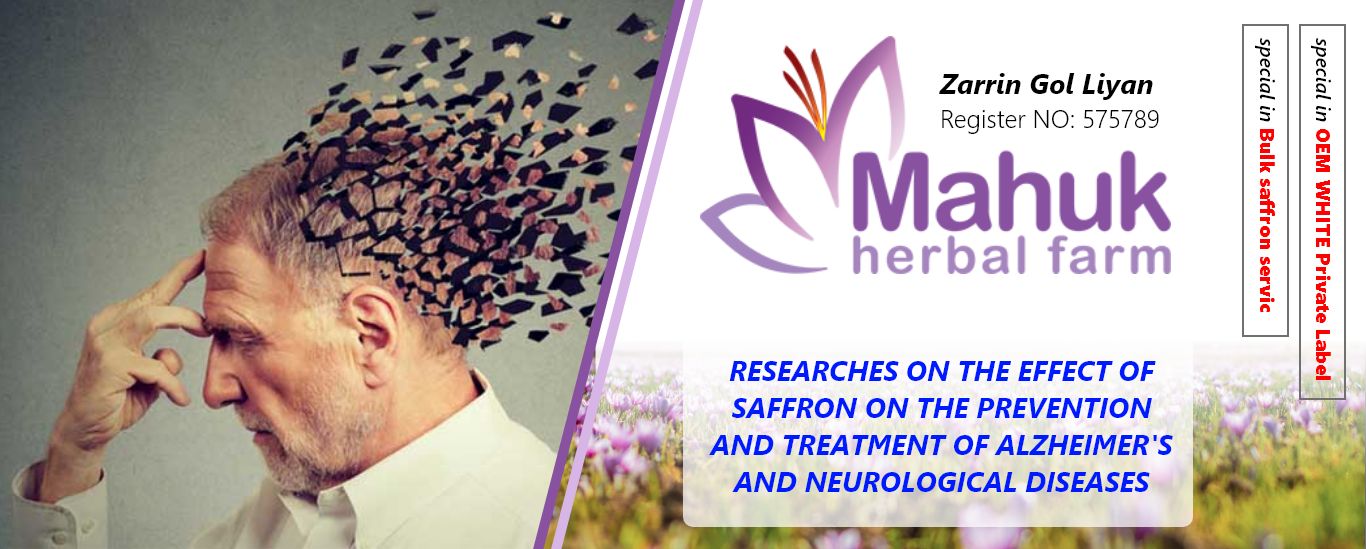

Saffron is one the most precious plant speciesin the world and its medical and seasoning utilizations has a long historical background. Crocus sativus L is scientific name of eatable saffron which is a perennial herb with corn. Saffron is among medical herbs which are utilized in traditional medicine, these are a few of its utilizations: antispasmodic, improving food digestion, tranquilizing gums, carminative, enhancing body sweats, stomachic tonic, Aphrodisiac, pain tranquilizer, expectorant, abortion enhancer, curing liver and gallbladder disorders, toothache and gum pain tranquilizer, insomnia treatment, anti-depression, anti-stress, anticonvulsants, curing cardiovascular disorders, anti-cancer, antihistamine and creating premature menstruation.
Pharmacological studies show that saffron’s extract has effects like antitumor, obtaining free radicals and lowering cholesterol. Around 150 volatile compounds and 50 non-volatile compounds have been discovered in saffron.
Saffron has 4 bio active components: Crocin, Crocetin, picrocrocin, safranal. These 4 components are responsible for saffron’s medical and food related high values, plus the fact that saffron maintains two crucial body vitamins: Riboflavin (vitamin B2) and Thiamine (vitamin B1).
In this bulletin we are going to look into someeffective roles of saffron and its components in curing neurological diseases including Alzheimer.
One of the most common problems that’s spreading worldwide is the medicationaleffects on neurological diseases, mental arrhythmia and neurological arrhythmia. The most prominent degenerative diseases for people over 70 is Alzheimer and Parkinson. The main symptoms of these diseases are cognitive impairment, involuntary and hidden movements, progressive dementia and personality changes. Individual’s mental conditions in different situations like accidents, loss of loved one and etc. can cause a brain disorder.
Alzheimer is a disease with progressive destruction of learning ability and memory. Pestiferous changes like: Fibrous-nerve twistsand Amyloid plaques can cause dysbiosis in brain which eventually results in destroying learning ability and memory. In terms of pestiferous, Alzheimer is the result of peptid fibril of amyloid beta sediment. Saffron’s ethanol extract has anti-oxidant characteristics. Therapeutic effects of saffronon mouses that Alzheimer was induced to them was analyzed, this study shows that saffron has protective effects on neuro system which causes Cytokine release in blood flow and in another hand reduces chronic inflammations.
Since saffron has anti-inflammatory effects because of its flavonoids, tannins, saponins and crocins it can control and cure inflammations. Studies has shown that in small doses crocin is effectless, but in high doses with intraventricular injection, crocin alone can cure the function of hippocampus.
Considering that, inflammatory process increases with inflammatory metabolites (specially production of amyloid beta) and since free radicals are known as mediator of neurotoxicity caused by amyloid beta protein in creating Alzheimer disease so that based on documents amyloid beta increases production of free radical and lipids oxidation in nerve cells resulted in the death of cell; thus therapy with saffron extract as a barrier to creating oxidation reactions caused by amyloid beta can help improving memory.
Therefore, discovering new medicines to cure Alzheimer is essential. Nowadays natural products are the main subject of dementia diseases In terms of medicational effects of saffron on brain disorders, the effect of saffron on lowering symptoms of Alzheimer has been proved.



